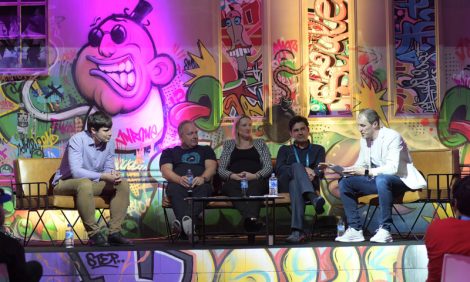
Designing the perfect machine: It starts with the human element

Artificial intelligence is advancing rapidly, but the technology will require human interaction to truly excel in the coming decades, said an AI panel assembled at Xerocon in Melbourne.
“We know the technology will take us to an interesting place, and quickly,” said Xero CEO Rod Drury at Xerocon.” What we need to do is not passively accept the role that humans will play but actively design the role we want to have. It’s humans that have purpose and empathy. And we have an opportunity as an industry and community of accountants and bookkeepers to design the human interactions in, as we are doing with all the cool technology development.”
Media, telecoms and consumer financial services are among the industries likeliest to be disrupted, according to a survey cited in the Harvard Business Review. However, the demand for technology-proficient accountants and bookkeepers will actually rise, said Drury.
“We think the accounting industry will grow, and we are training the next generation in the technology that will help them flourish,” said Drury, who noted the advisory role that accountants and bookkeepers increasingly play to small business.
This week Xero announced its Lifelong Learning Platform, an online tool aimed at students and at reskilling the workforce. New Zealand and Australian educational institutions will deliver it from November, including Swinburne University of Technology in Melbourne.
The platform will help accelerate the growth and performance of small and medium businesses, by giving learners the skills and knowledge that accounting, bookkeeping, and advisory partners are desperate to hire.
“We want our accounting and bookkeeping partners to weave their magic more and more effectively on their customers,” said Drury. “Everything we do is about building the accounting industry up, not tearing it down. We are constructing the machine and human sides at the same time.”
AI’s accelerating advance is due, ironically, to countless humans having uploaded their own intelligence into computer systems, said Tiberio Caetano, a machine-learning professor at the University of Sydney and cofounder of Ambiata who joined the Xerocon AI panel.
“We’ve spent years tagging millions of people’s faces and instructing the computer ‘This is a friend. This is a face. This is a translation from English to Portuguese.’ Everyone is generating data,” said Caetano.
That data includes accounting and bookkeeping records.
“Because accounting is such a structured taxonomy, we get pretty good data,” said Drury. “The really big move in AI will be transitioning from accounting where you think `Oh, I must go and do something on the computer’ to the machine telling you what to do next. We’ll see more innovation in the next two or three years than we have in the last 10.”
The changes will involve some disruption, but net job losses are unlikely, said Catherine Ball, an author, founder, and ethics advocate in the field of robotics who joined the AI panel.
Society has never lost jobs during historical episodes of automation, with one exception. “The only job that’s gone completely is the elevator operator,” said Ball.
AI and machine learning will ultimately will empower people to be more human, said Ball.
“There are different levels of autonomy and there are different levels of automation, and I actually see there being a bit of a Goldilocks zone in the next five years,” she said.
In Australia, an estimated 40 to 60 per cent of all workers will be self-employed within five to 10 years, said Ball.
“The idea of jobs for life is gone,” Ball said. “People spend an average of two years at each corporate they work at, and now people have side shows that they’re turning into startups or small businesses.”
Ultimately, Ball said she isn’t losing sleep over the thought of robots and machines eliminating jobs.
“Computers at the moment are only as good as we train them,” she said.
The post Designing the perfect machine: It starts with the human element appeared first on Xero Blog.
Source: Xero Blog






